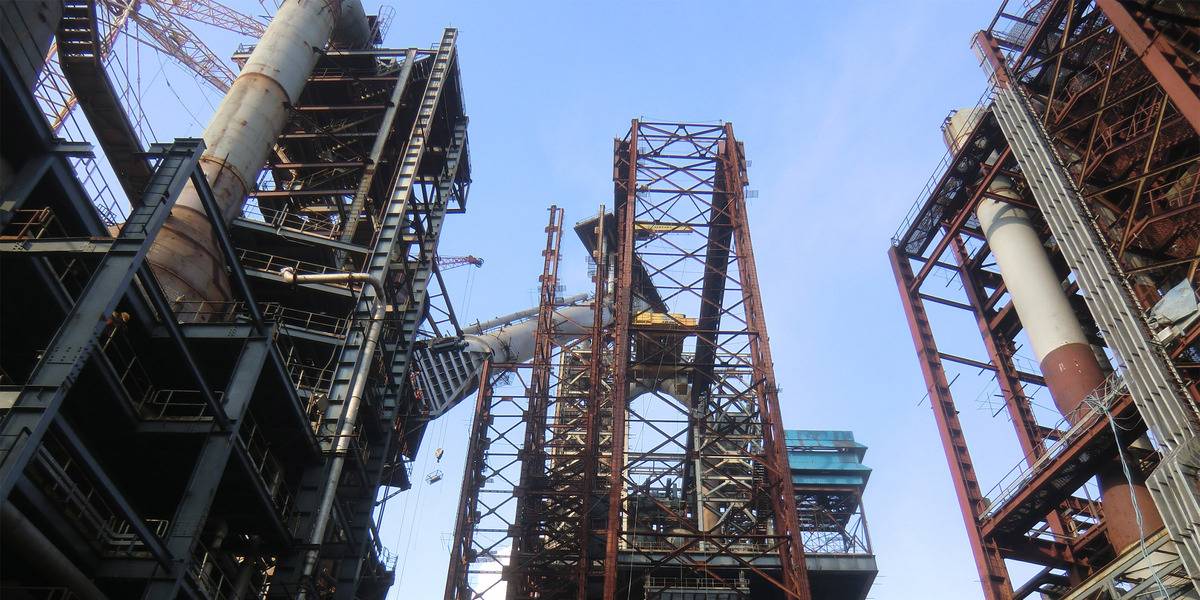IRONMAKING AND STEELMAKING
Blast Furnace Gas Cleaning
The Danieli Corus tangential cyclone for Blast Furnace Gas Cleaning is the most efficient method for dry separation of dust.
Dry separation of dust particles in the blast furnace top gas before wet scrubbing is traditionally done by a gravity dustcatcher and most recently by cyclones. The recycled dust must be low in zinc to satisfy the limits of the blast furnace zinc balance.
Gravity dustcatcher efficiency is typically 50%, and around two thirds of the balance is zinc-poor and requires further separation after wet scrubbing to enable recycling. With cyclones, the efficiency is around 85%, meaning that 85% of the dust can be recycled directly. The remaining 15% going to the wet scrubber is zinc-rich and can be stored after wet scrubbing, eliminating the need for further separation of the zinc-rich and zinc-poor fractions.
The Danieli Corus cyclone is of a straightforward design and comes equipped with either one or two tangential inlets, depending on process conditions and dimensional restrictions. This type of cyclone has no internal parts and the complicated inlet dome and replaceable guide vanes found in competing designs with axial inlets are eliminated. The clean gas dust concentration at many installations is consistently 1 to 3 mg/Nm³, measured on a dry gas basis after the secondary section. The amount of sludge produced in the wet scrubbing stage is greatly reduced and secondary treatment by hydrocyclonage is not strictly required. The cyclone has a pressure drop of only 20–40 mbar, making the system suitable for combining with top-gas energy recovery turbines.
- Iron recovery up to 75–91%, for optimized zinc input to blast furnace and minimized slurry from wet section, eliminating requirement for hydrocyclonage.
- No internals, minimized maintenance.
- Lowest pressure drop for maximum top-gas recovery turbine efficiency.




